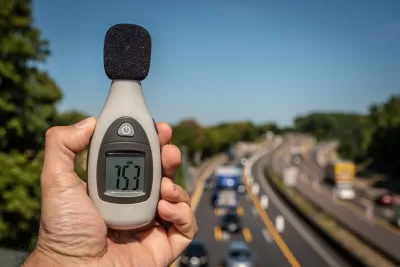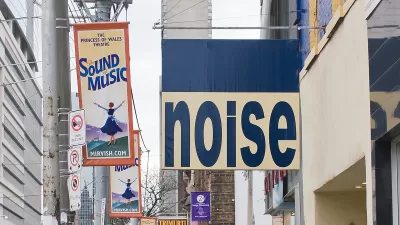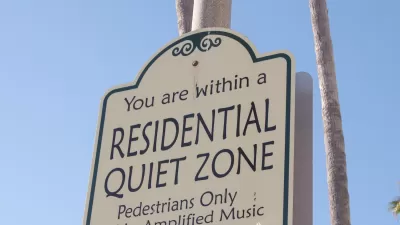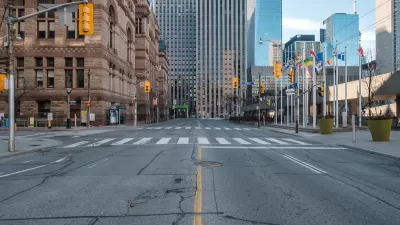A detailed description of how noise impacts health and wellbeing.

A New York Times article by Emily Baumgaertner, Jason Kao, Eleanor Lutz, Josephine Sedgwick, Rumsey Taylor, Noah Throop and Josh Williams highlights the dangers of noise pollution such as traffic and airplane sounds to public health.
We’ve all been told to limit the volume on our headphones to protect our hearing. But it is the relentless din of daily life in some places that can have lasting effects throughout the body.
As the authors explain, this isn’t exclusively a problem in big, noisy cities. “Even people who live in relatively peaceful rural and suburban communities can be at risk. The sudden blare of trains that run periodically through D’Lo, Miss. (population: less than 400), can be especially jarring to the body because there is little ambient noise to drown out the jolt.”
The article details the effects noise can have on the human body and mind. “The endocrine system can overreact, causing too much cortisol, adrenaline and other chemicals to course through the body,” for example. Noise can contribute to higher blood pressure, inflammation in arteries, and other risk factors for heart disease.
As the science around noise pollution becomes more clear, cities can take steps to reduce harmful noise. The practice was established at the federal level in 1972 with the Noise Control Act issued by the Environmental Protection Agency (EPA), an office that was later defunded under the Reagan administration.
Meanwhile, “The European Union requires member nations to monitor and assess sound levels across regions and to produce new action plans every five years to address communities at greatest risk.” Some countries have installed noise-detecting cameras, quiet hours, and other mitigation measures.
FULL STORY: Noise could take years off your life. Here’s how.

Planetizen Federal Action Tracker
A weekly monitor of how Trump’s orders and actions are impacting planners and planning in America.

Congressman Proposes Bill to Rename DC Metro “Trump Train”
The Make Autorail Great Again Act would withhold federal funding to the system until the Washington Metropolitan Area Transit Authority (WMATA), rebrands as the Washington Metropolitan Authority for Greater Access (WMAGA).

The Simple Legislative Tool Transforming Vacant Downtowns
In California, Michigan and Georgia, an easy win is bringing dollars — and delight — back to city centers.

DC Backpedals on Bike Lane Protection, Swaps Barriers for Paint
Citing aesthetic concerns, the city is removing the concrete barriers and flexposts that once separated Arizona Avenue cyclists from motor vehicles.

In These Cities, Most New Housing is Under 441 Square Feet
With loosened restrictions on “micro-housing,” tiny units now make up as much as 66% of newly constructed housing.

Albuquerque’s Microtransit: A Planner’s Answer to Food Access Gaps
New microtransit vans in Albuquerque aim to close food access gaps by linking low-income areas to grocery stores, cutting travel times by 30 percent and offering planners a scalable model for equity-focused transit.
Urban Design for Planners 1: Software Tools
This six-course series explores essential urban design concepts using open source software and equips planners with the tools they need to participate fully in the urban design process.
Planning for Universal Design
Learn the tools for implementing Universal Design in planning regulations.
Smith Gee Studio
City of Charlotte
City of Camden Redevelopment Agency
City of Astoria
Transportation Research & Education Center (TREC) at Portland State University
US High Speed Rail Association
City of Camden Redevelopment Agency
Municipality of Princeton (NJ)





























